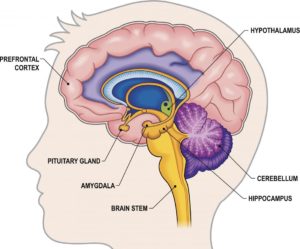
Offering praise or positive recognition is a simple but transforming act.
Unfortunately, it is not uncommon for employees to feel that their best efforts are routinely ignored. Only one in three workers in the U.S. strongly agree that they received positive recognition or praise for doing good work in the past seven days (The Toolkit for Managers).
Evidence-Based Practice:
Multiple studies demonstrate the value and power of positive recognition in the workplace. Below are some examples of research on the power of positive recognition.
- The Global Recognition Study discovered that managers who provide positive recognition are more respected and admired by employees. Employees who receive regular praise are more productive, engaged and more likely to stay with their organization than those who do not. Praise creates a corporate culture to receive higher loyalty and satisfaction scores from employees and even enjoy better health than employees who are not.
- The findings of a 10-year motivation study performed by O.C. Tanner, in which more than 200,000 employees and managers were interviewed. When managers are considered to be effective at ‘recognizing’ their employees, they:
- Have lower turnover rates than other managers.
- Achieve better organizational results.
- Are seen to be much stronger in goal-setting, communication, trust, and accountability.
- According to Gallup’s analysis: The act of recognition sends messages to other employees about what success looks like. In this way, recognition is both a tool for personal reward and an opportunity to reinforce the desired culture of the organization to other employees.
The Effects on the Brain:
“Gratitude can have such a powerful impact on your life because it engages your brain in a virtuous cycle.”-Alex Korb Ph.D.
The brain is affected by appreciation and gratefulness. The hypothalamus, which controls basic bodily functions such as eating and sleeping, and dopamine, the “reward neurotransmitter” are heavily affected by feelings of gratitude.
Furthermore, these brain boosts can have significant positive effects in the workplace culture and in the employee’s work/life balance. Showing gratitude can increase a person’s wellness, increase better sleep habits, increase metabolism and lessen stress…you’re not only boosting performance and engagement but the employee’s well-being and health.
Delivering Effective Positive Recognition:
There are two key aspects of employee recognition (Annamarie Mann):
- The “giver” sees, identifies, or realizes an opportunity to praise someone.
- The “giver’s” physical act of doing something to acknowledge and praise people for their good work.
What recognition do employees remember most?
According to Gallop, the following methods were the top six methods employees remembered most.
- Public recognition or acknowledgment via an award, certificate or commendation.
- Private recognition from a boss, peer or customer.
- Receiving or obtaining a high level of achievement through evaluations or reviews.
- Promotion or increase in the scope of work or responsibility to show trust.
- Monetary awards such as a trip, prize or pay increase.
- Personal satisfaction or pride in work.
Notice that money is number five on the list. Other studies have similar findings.
Over the years, I have found that meaningful praise is:
- Specific – What is the specific behavior you are praising? Praise genuine behaviors. However, if you wait for those significant events, you’ll miss many opportunities to reinforce good work.
- Timely – The sooner the praise is delivered the more powerful. Next week will generally be too long to wait.
- Sincere – Mean what you say and deliver the praise in a genuine manner. People want sincere meaningful praise. Most employees have what I call good “BS Sniffers.” If you are just going through the motions, they’ll pick up on it…and that’s probably worse than no praise.
Lastly, take into consideration the individual. What praise would be meaningful and how would they like it delivered? I once had an individual we were going to recognize. However, I knew he was a very private person and to deliver praise publicly might feel like punishment. His supervisor asked how he would like the recognition. His choice was in my office with just him and his supervisor—and that what we did.
When will you start?
Many leaders I talk with simply don’t think to offer praise. Do you have others who can help you spot opportunities to praise? Start with catching someone doing right at least once a week. You’ll be surprised how your staff notices!
For the Faith-Based Reader:
“Let us hold fast the confession of our hope without wavering, for he who promised is faithful. And let us consider how to stir up one another to love and good works, not neglecting to meet together, as is the habit of some, but encouraging one another, and ball the more as you see the Day drawing near.”
References:
- Annamarie Mann and Nate Dvorak, Employee Recognition: Low Cost, High Impact, Workplace 28 June 2016, https://www.gallup.com/workplace/236441/employee-recognition-low-cost-high-impact.aspx
- In Praise of Gratitude, November 2011, https://www.health.harvard.edu/newsletter_article/in-praise-of-gratitude
- Leong Teen Wei and Rashad Yazdanifard, The impact of Positive Reinforcement on Employees’ Performance in Organizations, American Journal of Industrial and Business Management, (January 2014, Vol. 4, 9-12) http://file.scirp.org/pdf/AJIBM_2014011309335174.pdf
- Md. Shariful Alam, Al Shahrani Ahmed Saeed, Md. Sahabuddin, and Selina Akter, Relationship between Employee Recognition and Employee Contribution in Service Industry, International Journal of Business and Marketing Management Vol. 1(1), pp. 1-8, April 2013, http://www.resjournals.org/IJBMM/PDF/2013/April/Alam_et_al.pdf
- O.C. Tanner, The Psychological Effects of Workplace Appreciation & Gratitude, https://www.emergenetics.com/blog/workplace-appreciation-gratitude/
- The Toolkit for Managers, The Power of Praise and Recognition, 18 February 2014, https://www.trainingjournal.com/articles/feature/power-praise-and-recognition
